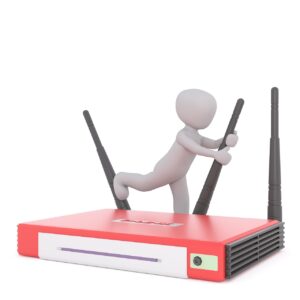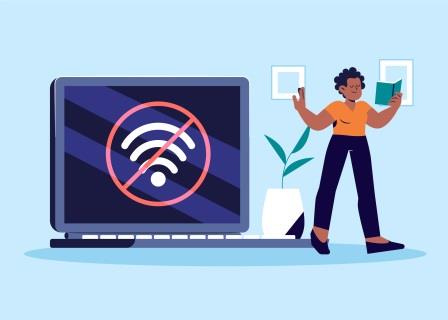Intermittent wireless network issues can be incredibly frustrating. One moment you’re enjoying a seamless online experience, and the next, you’re battling slow speeds or dropped connections. I’ve been there, and I know how disruptive it can be. That’s why I’ve put together this comprehensive guide to help you troubleshoot and resolve those pesky intermittent wireless network issues.

Understanding Intermittent Wireless Network Issues
Before diving into the solutions, it’s essential to understand what intermittent wireless network issues are and why they occur. Intermittent issues are characterized by occasional and unpredictable drops in your Wi-Fi connection or fluctuations in speed. These problems can stem from various sources, making them tricky to diagnose.
Common Symptoms
Here are some common symptoms of intermittent wireless network issues that I’ve encountered:
- Frequent Disconnections: Your Wi-Fi connection drops unexpectedly.
- Fluctuating Speeds: Internet speeds vary significantly, even when you’re close to the router.
- Buffering and Lag: Streaming videos buffer frequently, and online games lag.
- Poor Signal Strength: Wi-Fi signal strength is weak or inconsistent in certain areas of your home.
Potential Causes
Intermittent wireless network issues can result from several factors. Here are some common causes:
- Interference: Other electronic devices or neighboring Wi-Fi networks cause signal interference.
- Router Placement: The location of your router can affect signal strength and coverage.
- Outdated Firmware: Running old firmware on your router can lead to performance issues.
- Network Congestion: Too many devices connected to the network simultaneously.
- Hardware Issues: Faulty or outdated hardware components in your router or devices.
Understanding the Basics:
Before we dive into troubleshooting, let’s take a moment to understand how wireless networks function. Think of your Wi-Fi signal as a radio wave traveling through the air, carrying data from your router to your device. Now, just like a radio station, interference can disrupt the signal, leading to dropped connections and slow speeds.
Identifying Common Culprits
So, what are the usual suspects behind intermittent Wi-Fi woes? Let’s break it down:
- Physical Obstructions: Walls, furniture, and even appliances can obstruct Wi-Fi signals, causing them to weaken or scatter.
- Interference: Devices like microwaves, cordless phones, and Bluetooth gadgets operate on similar frequencies as Wi-Fi, leading to interference and signal degradation.
- Router Issues: Outdated firmware, overheating, or hardware malfunctions in your router can all contribute to unstable connections.
- Distance from Router: The farther you are from your router, the weaker the signal strength, increasing the likelihood of dropouts.
- Channel Congestion: In crowded urban areas, multiple Wi-Fi networks operating on the same channel can lead to congestion and performance issues.

Initial Troubleshooting Steps
When dealing with intermittent wireless network issues, it’s essential to start with some basic troubleshooting steps. These steps can help you identify and resolve common problems quickly.
Step 1: Restart Your Router
One of the simplest yet most effective troubleshooting steps is to restart your wireless router. Unplug it from the power source, wait for about 30 seconds, and then plug it back in. This can help clear temporary glitches and refresh the connection. I’ve lost count of how many times a simple restart has fixed my network issues.
Step 2: Check for Interference
Interference from other electronic devices can disrupt your Wi-Fi signal. Ensure your router is placed away from devices like microwaves, cordless phones, and baby monitors. I once had my router near a cordless phone, and moving it significantly improved my connection.
Step 3: Update Router Firmware
Outdated firmware can cause performance issues and security vulnerabilities. Check your router manufacturer’s website for firmware updates and follow their instructions to install them. I set a reminder every few months to check for firmware updates.
Step 4: Reduce Network Congestion
Too many devices connected to your network can lead to congestion and slowdowns. Disconnect any devices that aren’t in use and see if this improves your connection. I make it a habit to disconnect devices like smart speakers and old smartphones that aren’t in regular use.
Step 5: Check Signal Strength
Poor signal strength can cause intermittent connections. Use a Wi-Fi analyzer app to check the signal strength in different areas of your home. If you notice weak signals, consider repositioning your router or adding a Wi-Fi range extender. I found that moving my router to a more central location improved the signal in every room.
Advanced Troubleshooting Techniques
If the initial steps don’t resolve your intermittent wireless network issues, it’s time to delve into more advanced troubleshooting techniques. These methods can help identify and fix deeper problems affecting your network.
Step 6: Change Wi-Fi Channels
Wi-Fi channels can become crowded, especially in densely populated areas. Changing your router’s Wi-Fi channel can reduce interference from neighboring networks. Access your router’s settings, find the Wi-Fi channel option, and switch to a less crowded channel. I switched to a less crowded channel and noticed a significant improvement in my connection stability.
Step 7: Adjust Router Settings
Tweaking your router’s settings can optimize performance. Consider changing the following settings:
- Channel Width: Set to 20MHz for 2.4GHz networks to reduce interference.
- Transmission Power: Set to high to increase coverage.
- Beacon Interval: Adjust to balance between performance and battery life for connected devices.
I found that adjusting these settings based on my home layout and device usage patterns helped stabilize my network.
Step 8: Upgrade Your Router
If your router is old or doesn’t support the latest Wi-Fi standards, it might be time for an upgrade. Newer routers offer better performance, security, and features. When I upgraded to a dual-band router, I noticed a significant improvement in my network’s reliability and speed.
Step 9: Check for Malware and Viruses
Malware and viruses on your devices can cause network issues. Run a thorough scan using reputable antivirus software to ensure your devices are clean. I had a malware infection on my laptop once, and cleaning it up resolved my connectivity problems.
Step 10: Reset to Factory Settings
If all else fails, resetting your router to factory settings can help. This will erase all custom settings, so you’ll need to set up your network again. To reset, press and hold the reset button on your router for about 10 seconds. I’ve had to do this a couple of times, and while it’s a hassle, it often resolves stubborn issues.

Optimizing Your Home Network
In addition to troubleshooting, there are several steps you can take to optimize your home network for better performance and reliability.
Step 11: Position Your Router Correctly
The placement of your router can significantly impact your Wi-Fi signal. Place your router in a central location, elevated from the floor, and away from obstructions. I moved my router from a corner of the living room to a more central spot, and it made a big difference.
Step 12: Use Quality of Service (QoS) Settings
Quality of Service (QoS) settings allow you to prioritize certain types of traffic, ensuring that important activities like video calls and online gaming receive more bandwidth. I enabled QoS on my router to prioritize streaming and gaming, and it helped reduce buffering and lag.
Step 13: Use a Wired Connection
For devices that require a stable and fast connection, consider using a wired Ethernet connection instead of Wi-Fi. I use an Ethernet cable for my desktop computer and gaming console to ensure a reliable connection.
Step 14: Install Wi-Fi Range Extenders or Mesh Systems
If you have a large home or areas with weak Wi-Fi signals, consider installing Wi-Fi range extenders or a mesh network system. These devices can help extend your Wi-Fi coverage and eliminate dead zones. I installed a mesh system in my home, and it provided seamless coverage throughout the house.
Step 15: Regularly Monitor and Maintain Your Network
Regularly monitor your network’s performance and make adjustments as needed. Use network monitoring tools to check for issues and keep your firmware and devices up-to-date. I set aside some time every few months to review and optimize my network settings.
Real-Life Examples and Solutions
Sharing real-life examples and solutions can help illustrate how these troubleshooting steps work in practice. Here are a few scenarios I’ve encountered and how I solved them.
Example 1: Frequent Disconnections During Video Calls
I used to experience frequent disconnections during video calls, which was incredibly frustrating. After some investigation, I discovered that my router was placed near a cordless phone, causing interference. Moving the router to a different location resolved the issue, and I’ve had stable video calls since then.
Example 2: Slow Speeds in Certain Rooms
In my home, the Wi-Fi signal was weak in the upstairs bedrooms, leading to slow speeds. I used a Wi-Fi analyzer app to check the signal strength and found that the signal was weak due to the distance from the router. Installing a Wi-Fi range extender on the staircase boosted the signal and improved speeds in those rooms.
Example 3: Network Congestion from Too Many Devices
During family gatherings, the network would slow down due to the number of devices connected simultaneously. Enabling QoS settings on my router helped prioritize bandwidth for essential activities like streaming and video calls, reducing congestion and improving overall performance.
Conclusion
Troubleshooting intermittent wireless network issues can be challenging, but with the right approach and tools, you can resolve these problems and enjoy a stable and reliable Wi-Fi connection. By following the steps and tips outlined in this guide, you can diagnose and fix common issues, optimize your network, and ensure a seamless online experience.
I hope this guide has provided you with valuable insights and practical solutions. Remember, patience and persistence are key when troubleshooting network issues. Feel free to reach out with any questions or share your own experiences. Happy networking!
This comprehensive guide covers the essentials of troubleshooting intermittent wireless network issues, from basic understanding to advanced solutions, with practical tips and personal insights. Let me know if you need any additional information or if specific sections are expanded!

SAMMY MWANGI the editor of Autohomegadgets.com. He is an Electronics Technician enthusiast and a Sales Manager in one of the leading ICT companies in Africa. When he is not working, he loves to travel and explore nature. He is a Robot fanatic too.







